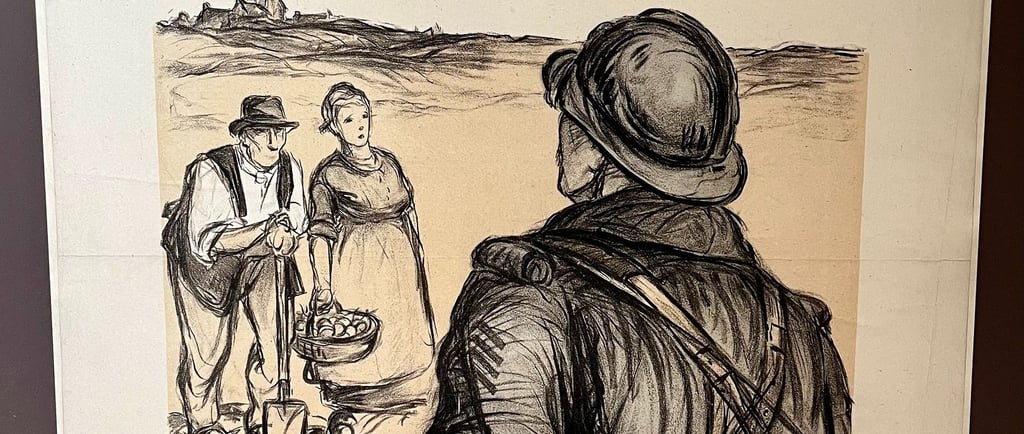22/04/2024 – Them boots were made for walking (and ruling Europe)
SuperTrip 2024 Post 20
2024 BLOG
1/22/20252 min read


I’ve been wearing both coats (puffer and shell) together this week, also my fleecy hat. Although there are lovely bright spells, the heat wave is wayyy over.
It’s been good walking weather. We’ve trekked 138km this week, just shy of 20km per day, close to the full camino-day. No aches or blisters, but we have been turning in early all week. Our self-owning motto: “home by 5” has become “home by 4”. I’ve had to break out my new shoes, brought for the walk, earlier than expected. My old ones were truly done, performing no other function than keeping my socks in. Through rain, hail, wind, we’ve proven that we don’t melt and are able to make each other laugh while walking uphill in the sleet.
Today, I want to tackle our visit to the Army Museum at Les Invalides. It starts off sedately enough, with the royal armoury (much depleted, apparently, because the Revolutionaries pillaged it to arm themselves and never gave their weapons back). It ends, in photogenic, neo-classical splendour, with the tomb of Napoleon, a repurposed Cathedral of opulent imperialism, its crypt given over to the vast pseudo-porphyry sarcophagus surrounded by plaster friezes of Napoleon as Apollo or Zeus, law-giver, educator, peacemaker…
We also hunted down the Museum of Plan-Reliefs (basically in the attic), scale models of parts of France, variously commissioned by Louis XIV, the Directorship and Napoleon, the better to strategise their campaigns (literally, on which to play soldiers).
The meat of the museum is the First and Second World War galleries. The WWII galleries acknowledge the complexities of Occupation, the Vichy Regime, although with a deafening silence toward the reprisals for “collaborators”. Overall, it is a tale of the Resistance, the role of Women, Students, a measured presentation of De Gaulle and the Allied Powers. The Jewish deportations are somberly faced. It is very “manageable”, educational.
The WWI galleries are different. They lay bare the horror of “Industrial warfare” and the governments’ iron grip on narrative. Heartbreakingly rosy (to my modern eye) posters urging “grow potatoes to feed our brave boys”, or advertising tombolas to raise funds to feed “the hungry of Belgium”, evidence how little people knew “back home” – and how unprepared they were for the broken men that returned. A display of prosthetics is juxtaposed with another of “trench art”, highlighting the horror and the tedium of the “static war”. The following rooms deal extensively with the social legislation that followed, which, in itself, makes clear how many disfigured, disabled, widowed, orphaned there were in 1920s France.
After these demanding galleries is a children’s section, where Carey cheered me up by putting on various silly hats. As he does. On our wedding day, when Carey was playing the fool, my soon-to-be step-daughter, drew me aside: “Dad always does that when he’s emotional”, she told me, earnestly, as if I wouldn’t know this already. I loved them both so much in that moment.
Follow our Journey at:
Email us at:
Karen's Podcast at:
© 2025. All rights reserved.
Inspired by our 2024 Camino Francais, Karen has a periodic podcast called "I sent you a bloody boat", personal thoughts on faith by a person who believes in thinking. Also, known as "The Reluctant Christian". You can listen to it on Spotify and on Apple Podcasts at:
